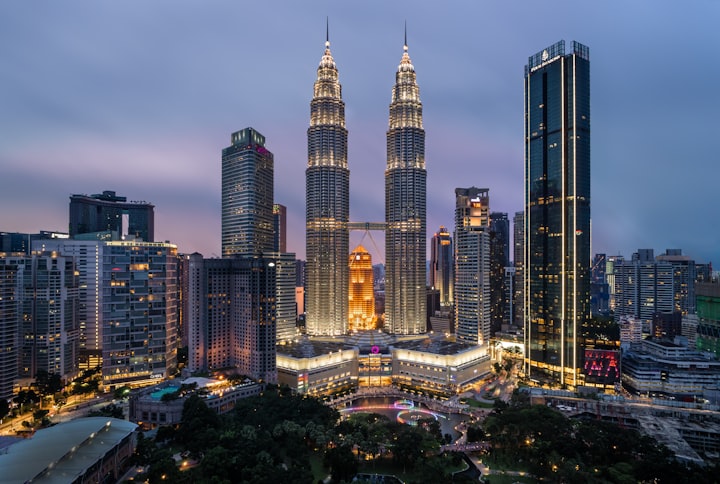Rothschild Boulevard: The Street of the People
Meet me in the White City

Rothschild Boulevard (Sderot Rothschild). Tel Aviv, Israel. The Boulevard is one mile long, framed by Neve Tzedek neighborhood in the south, and Habima theater (the national theatre of Israel) to the north.
The picturesque street is characterized by its wide, tree-lined central strip with pedestrian, bike lanes, and sculptures, just as much as it is its endless string of coffee spots and restaurants, each one seeming to offer a better culinary experience than the next. Rothschild is also a financial center, sitting at the heart of Tel Aviv’s financial district. This is where the First International Bank Tower is located, as well as the Israel offices of HSBC Bank.
It's also the site of some of my fondest Israel memories-neverending strolls on never-ending summer days, unforgettable nights that are hard to remember, first dates, solo shopping trips, the list goes on.
As one of the first streets to crop up in Tel Aviv, the thoroughfare was originally called Rehov HaAm, Hebrew for “the street of the people.”Its new name, Rothschild Boulevard, harks back to the foundations of the Zionist movement; Baron Edmond de Rothschild, a French Jewish banker and iconic philanthropist, who bankrolled much of the wave of 19th-century Jewish immigration. That, coupled with the names of the streets in its immediate vicinity — Herzl, Allenby, Ahad Ha’am, Sheinkin, and others - it's a real 'who's-who' of Israel's establishment, and the impact of which hits me anew each and every time I visit.
High & Low Key Landmarks
Independence Hall
While many of the buildings on Rothschild Boulevard have rich histories, the top historic attraction of them all sits at #16 Rothschild. The plot was the home of Meir Dizengoff, Tel-Aviv’s first mayor. Later, after being donated by Dizengoff to the city of Tel Aviv, was turned into a Bauhaus-style building, it was the site of the city’s first art museum. However, the most important thing that was created here was, well, Israel itself. You’re at Independence Hall, the site of the signing of Israel's Declaration of Independence in 1948. Naturally, ‘Independence Hall’ has since been converted into a museum dedicated to, what else, the signing of the Israeli Declaration of Independence and the history of Tel Aviv (though it’s currently undergoing major renovations.)
Interesting point: One of the reasons this location was chosen for the hasty-prepared ‘independence-declaration’ event was actually due to the building’s Bauhaus style. Its thick cement walls and narrow windows provided better security in case of an aerial raid (which indeed occurred on the next day).
Tel-Aviv’s First Kiosk

Back in 1919, when there were only 66 families living in Tel Aviv, there emerged a hot debate among residents as to whether or not to commercialize the area. Eventually, a small kiosk was opened where Rothschild Boulevard meets Herzl street, prompting perhaps the most controversial cold drink sales in history. But it must have caught on, because still today, the kiosk is still very much in business (or at least a reconstruction of the original kiosk at the same location.) Of course, it has updated itself to fit the tastes of Tel Aviv's residents today: it's now called Espresso Bar and serves up all sorts of coffee drinks, sandwiches and so on.
Engel House

Located at #84 Rothschild, Engel House was Israel’s first building constructed on stilts. This was done in the spirit of Bauhaus and it’s minimalist, ‘function-first’ approach. The new stilts allowed for better ventilation (through the shaded area)
Hagana Museum

Haganah Museum is located in the historic home of Eliyahu Golomb, one of the founders of the Haganah military organization and its commander. The house also served as the secret headquarters of the Haganah as well as a family gathering place for other prominent leaders of the pre-State Jewish community.
You can visit the Hagana Museum at #23 Rothschild to learn about Israel's defense force history.
Rothschild Blvd, Bauhaus’s Epicenter
During my most recent trip to Israel, the history lesson du jour was about Tel Aviv, as the ‘White City.' Amidst the foiage and bike lines, Rothschild Boulevard is lined with Bauhaus Buildings, the iconic architecture of Tel Aviv which led to its recognition as a UNESCO World Heritage Site and the ‘White City’ nickname. Concentrated on Rothschild, and its neighboring side streets, the White City encompasses a collection of over 4,000 buildings built in a unique form of the International Style, or, 'Bauhaus', in Tel Aviv. Because of its ancient and rich Jewish history, I [incorrectly] tend to think that the construction of its cities is similarly outdated. In fact, Tel Aviv has more Bauhaus/International buildings than any city in the entire world. Turns out, I had a lot to learn about the origin story of my beloved city, with that beloved street.
Bauhaus architecture (categorized primarily by functionality over decoration, simplicity over ornamentation, asymmetry over symmetry) was developed in the 1920s in Germany. From a cultural standpoint, Bauhaus was a natural fit for the classic Israeli ethos at that time - the minimalist approach was well-suited to the socialist-Zionist ideal of pre-state Israel, which perceived the construction of a new city as central to the creation of a new, more just society.
Interestingly (and sadly), what eventually spurred the Bauhaus craze in Tel Aviv was the desperation among Jews in pre-WWII Europe to escape elsewhere. At that point, enormous waves of people moved to then-Palestine, including newly-learned Jewish architects from Germany. So while Tel Aviv was quickly being built up, naturally the preferred architectural style was the new, modern German style of Bauhaus.
Tel Aviv was a perfect place for these architects to try put the new style into practice, the city was just a few decades old, and without a pre-established architectural conventions that Bauhaus buildings would possibly corrupt. Plus, the Bauhaus emphasis on maximizing function and keeping costs low was perfectly in line with the city’s need to accommodate the huge wave of immigrants by building solid structures quickly and cheaply. And so-the ‘White City’ was born.
This style of architecture has certainly helped make Tel Aviv a truly modern city, unlike so many other cities in Israel, since it now completely keeps up with other major cities aesthetically, culturally, financially, technologically, and more . But in thinking how all of this information contributes to our evolving understanding of a ‘sense of place’, I think Bauhaus’s adaptation to the Mediterranean and desert climate of Israel is hugely important.
In implementing the Bauhaus ideals to Tel Aviv buildings, architects had to adapt many details to accommodate the difference in climate between Israel and Germany. For example, Bauhaus or International style typically features large windows. But in a hot environment like Israel, large glass walls would cause uncomfortable heat in a room, so Tel Aviv-Bauhaus usually has smaller windows. Similarly, Israel Bauhaus buildings were/are often built on top of pillars, to allow cool air to flow freely underneath. Finally, the slanted, shingled roofs of typical International style were nixed in favor of flat roofs, to allow residents of the building to gather there together at night.
These adaptations are purely functional, but reveal a great deal of what gives a place a sense of place. It’s not about the specific aesthetic properties of a building or of a place, because most of those things can be found in a zillion other places, and so those features themselves don’t really give the place its character. The devil, rather, is in the details. It isn’t the result of the adaptations to Tel Aviv buildings themselves that give them their ‘sense of place’. Rather, the adaptations work to reveal certain cultural norms and priorities of Israel and of Tel Aviv-its social and physical needs-and those are the idiosyncrasies that really make a place a place.
When Zionist pioneers first built Rothschild, they envisioned a Tel Aviv thoroughfare to match the boulevards of Paris. But what they wound up with was something so uniquely Israeli, is and still evolving, right along with its pedestrians.
About the Creator
Rachel G. David
Head of Business Development @ Creatd (Nasdaq: CRTD)






Comments
There are no comments for this story
Be the first to respond and start the conversation.